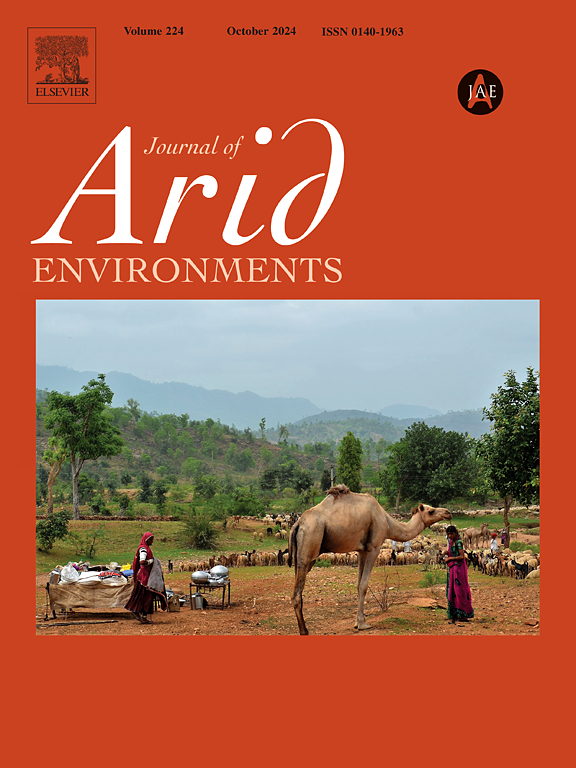Metagenomic analysis reveals environmental drivers of Actinobacteriota-associated antibiotic resistance and biosynthetic genes in colombian caribbean resource islands
IF 2.5
3区 环境科学与生态学
Q2 ECOLOGY
引用次数: 0
Abstract
Resource islands (RIs) or fertility islands are patches of vegetation in semi-arid regions known to serve as sources of bioactive compounds. However, the effects of seasonality and the presence of nurse trees on microbial diversity and functional potential in these microhabitats are not well understood. This study aimed to determine how these factors influence the abundance of Actinobacteriota and genes associated with antimicrobial resistance and biosynthesis in a semi-arid region of the Colombian Caribbean. Soil samples were collected under the canopy of three nurse trees (V: vegetation) and in bare soil without vegetation influence (C: control) during wet (W) and dry (D) seasons. Shotgun sequencing revealed a higher abundance of Actinobacteriota in the CD samples, with Solirubrobacterales, Frankiales, Propionibacteriales, and Pseudonocardiales being the most represented orders. Sixteen biosynthetic pathways for antimicrobial compounds were identified, with monobactam antibiotics, prodigiosin, and streptomycin representing the most abundant compounds, predominantly in VD. Additionally, ten antibiotic resistance pathways, such as rifamycin, MLS, tetracycline, aminoglycosides, and quinolones, were more prevalent in VW. These findings indicate that seasonality and vegetation in RIs significantly influence Actinobacteriota biodiversity and the distribution of resistance and biosynthetic genes, highlighting RIs as vital reservoirs of microbial diversity and potential sources of novel bioactive compounds in arid ecosystems.
宏基因组分析揭示了哥伦比亚加勒比资源岛屿放线菌相关抗生素耐药性和生物合成基因的环境驱动因素
资源岛(RIs)或肥沃岛是半干旱地区的植被斑块,已知是生物活性化合物的来源。然而,季节性和护理树的存在对这些微生境中微生物多样性和功能潜力的影响尚不清楚。本研究旨在确定这些因素如何影响哥伦比亚加勒比地区半干旱地区放线菌群的丰度以及与抗菌素耐药性和生物合成相关的基因。在湿季(W)和干季(D),分别在三棵护理树(V:植被)的树冠下和未受植被影响的裸土(C:对照)中采集土壤样品。霰弹枪测序显示CD样品中放线菌群的丰度较高,其中Solirubrobacterales, Frankiales, propionibacterales和Pseudonocardiales是最具代表性的目。共鉴定出16种抗菌化合物的生物合成途径,其中单巴坦类抗生素、芥子菌素和链霉素是最丰富的化合物,主要存在于VD中。此外,利福霉素、MLS、四环素、氨基糖苷类药物和喹诺酮类药物等10种抗生素耐药途径在大众中更为普遍。这些结果表明,RIs的季节性和植被显著影响放线菌的多样性以及抗性和生物合成基因的分布,突出了RIs是干旱生态系统中微生物多样性的重要储存库和新型生物活性化合物的潜在来源。
本文章由计算机程序翻译,如有差异,请以英文原文为准。
求助全文
约1分钟内获得全文
求助全文
来源期刊

Journal of Arid Environments
环境科学-环境科学
CiteScore
5.70
自引率
3.70%
发文量
144
审稿时长
55 days
期刊介绍:
The Journal of Arid Environments is an international journal publishing original scientific and technical research articles on physical, biological and cultural aspects of arid, semi-arid, and desert environments. As a forum of multi-disciplinary and interdisciplinary dialogue it addresses research on all aspects of arid environments and their past, present and future use.
 求助内容:
求助内容: 应助结果提醒方式:
应助结果提醒方式:


